
Part 05 - Station Street to The Chatsworth Centre
w/e 09 September 2018
All of this week's pictures were
taken with a Kodak DX6490
Information for this series has been sourced from
various places including the"Long Eaton Centenary Town Trail"
leaflet (CTT) and the"Long Eaton Townscape Heritage Initiative"
booklet (THI).
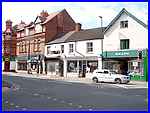 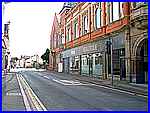 The previous part of the Town Walk concluded
where High Street changed to Main Street at the crossroads with
West Gate and Station Street. In this part we'll continue to
the other end of West Gate but in a circuitous route that first
of all involves a short walk along Station Street (left) to the
railway bridge before returning to the crossroads and turning
left into Main Street (right). The previous part of the Town Walk concluded
where High Street changed to Main Street at the crossroads with
West Gate and Station Street. In this part we'll continue to
the other end of West Gate but in a circuitous route that first
of all involves a short walk along Station Street (left) to the
railway bridge before returning to the crossroads and turning
left into Main Street (right).
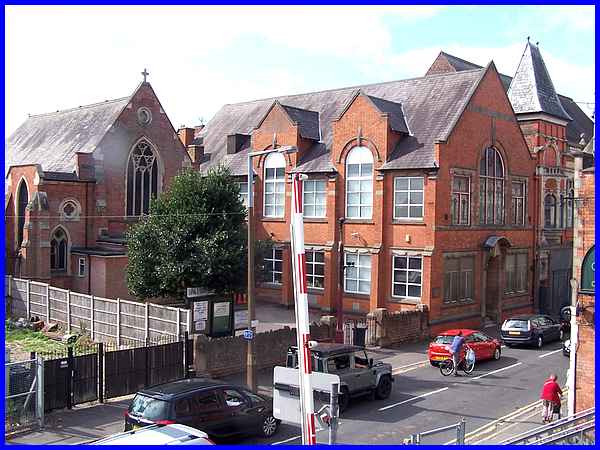
The reason for the detour into Station Street is to mount the
footbridge over the railway for this view of the Baptist Church
and adjacent schoolrooms to the right. The church was founded
in the upper rooms of a carpenter's shop on High Street in 1861
and moved to this site three years later when the first church
was built. The current church was built on adjacent land in 1880
with the school building opening in 1908.
|
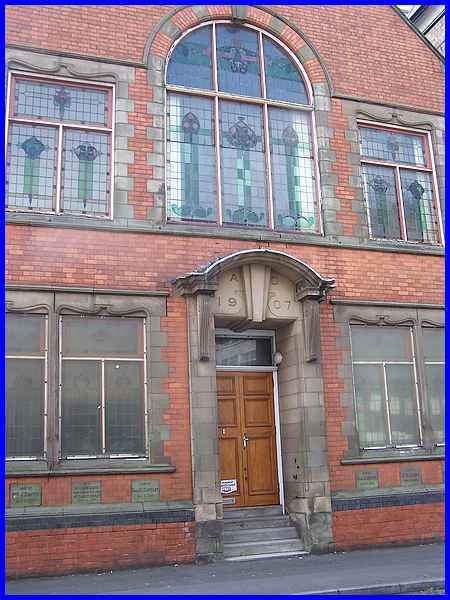
The foundation stones and the stonework above the door of the
school buildings all show the date 1907, the year before it actually
opened. The leaded windows were restored with the help of a THI
grant which was in operation between 2009 and 2013 and are probably
much appreciated by the community groups that use the Hall.
|
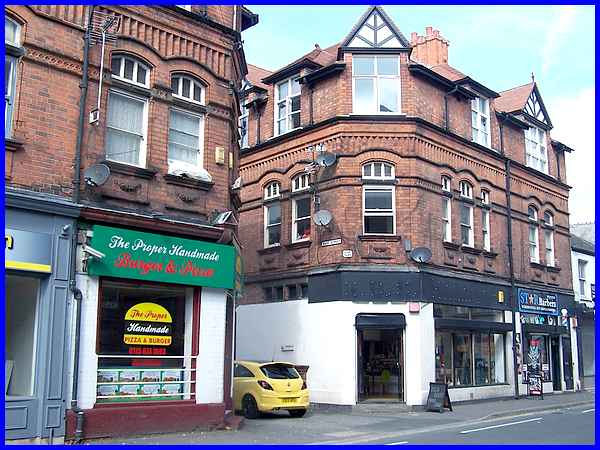
Returning to the crossroads and turning left we walked past Bank
Street , the narrow street where the yellow car was parked, for
this view of the building on the corner. The buildings on both
corners actually received grants under the THI scheme for help
with repairs to the intricate brickwork. In today's environment
with a different emphasis on building requirements, it is rare
to see such attention to detail in the appearance on new buildings.
|
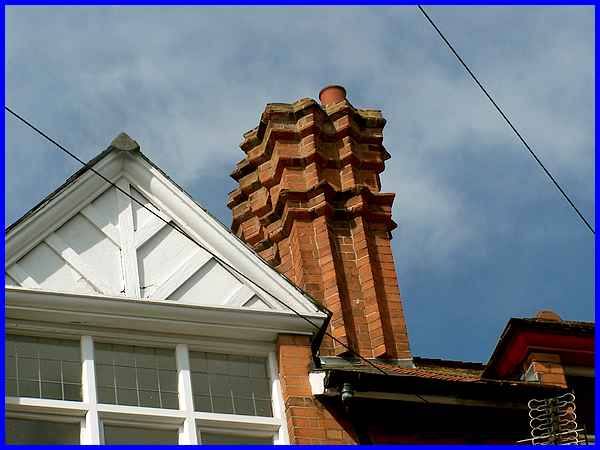
Chimney stacks such as this, typical of the work of John Sheldon
who probably designed these buildings on the corners of Bank
Street, would also be a rarity today and are thus well worth
preserving.
|
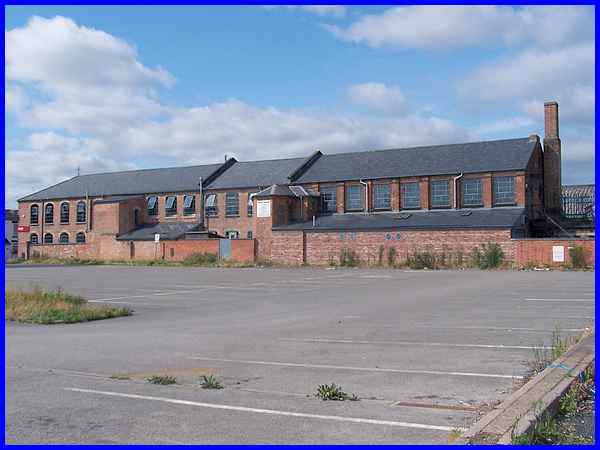
The route now continues along Bank Street into the car park of
a DIY superstore, now closed. At the far side of the car park
which was once the site of a five storey lace factory built by
Joseph Orchard in 1881 is Orchard's "Old" two storey
factory. Again a recipient of a THI grant the building has had
work done to roof, windows and brickwork.
|
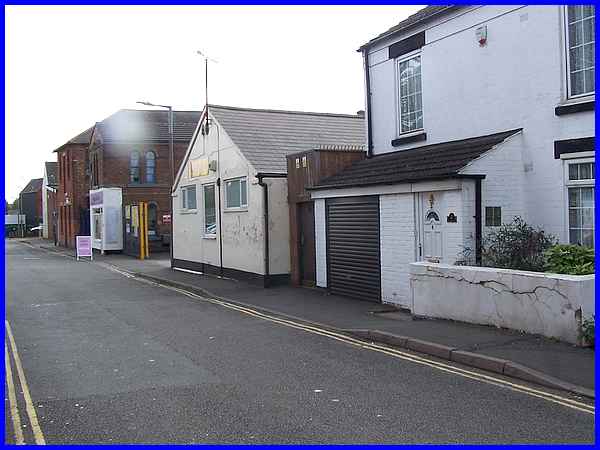
I said this would be a circuitous route and although the intention
was to walk through the car park to Chapel Street, a temporary
fence at the far side prohibited this and that meant returning
down Bank Street, turning right into Main Street and right again
into Chapel Street to pick up the intended route opposite some
of the surviving buildings of the first gas works. These were
built in 1852 by a lace manufacturer, William Bush.
|
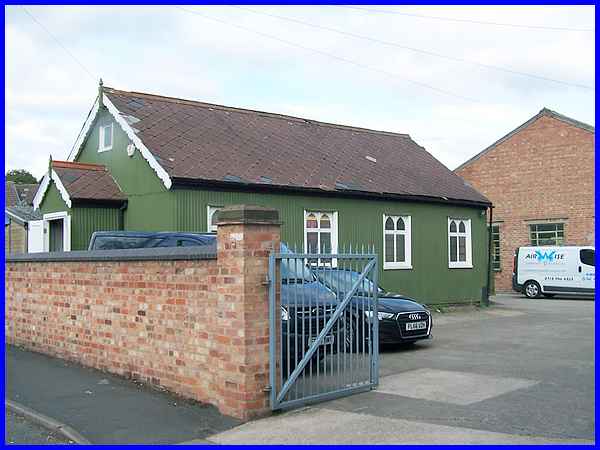
Tin tabernacles were set up in the mid nineteenth century as
ecclesiastical building made of corrugated iron. Some of the
inexpensive to construct prefabricated buildings still survive
as places of worship but this one on Chapel Street in Long Eaton
that is passed on the way to Gibb Street is now part of an engineering
company's premises.
|
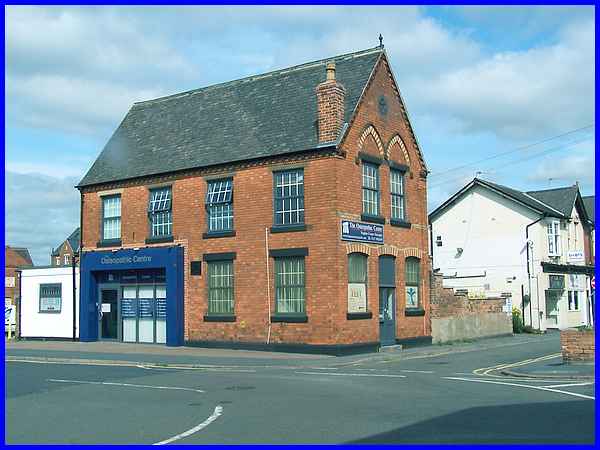
Turning right at the end of Chapel Street leads into Gibb Street
and at its junction with West Gate the building on the opposite
corner is number 18 Gibb Street. Formerly this was a printer's
workshop and its appearance has been preserved in part thanks
to another THI grant that helped fund roof and chimney repairs.
|
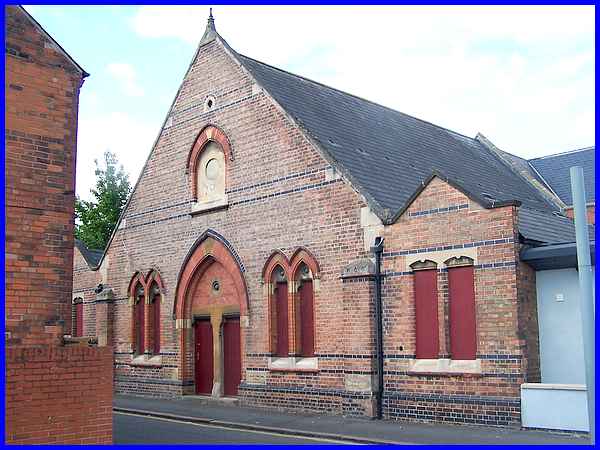
A left turn here along West Gate and across a small car park
brings the Bourne Chapel of 1873 into view on Orchard Street.
Originally the chapel had two spires but these were removed in
the 1960s.
|
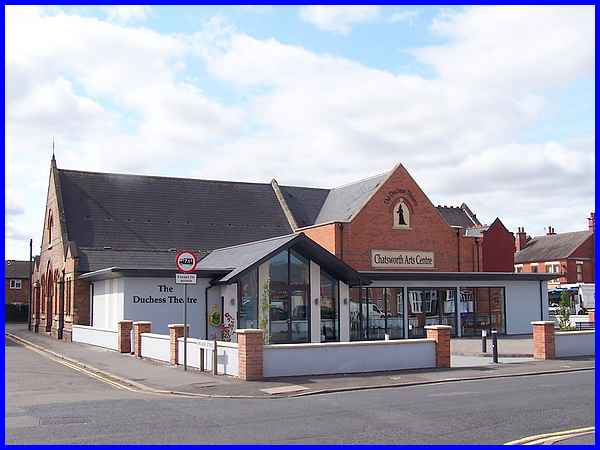
The chapel fell into disrepair but was purchased by a group of
local theatre enthusiasts in 1985 and with the schoolhall converted
into a theatre. In 2003 however a fire tore through the building
but like a phoenix from the ashes the Chatsworth Art Centre and
Duchess Theatre rose. Today it is a thriving enterprise and hosts
a wide variety of events.
|

